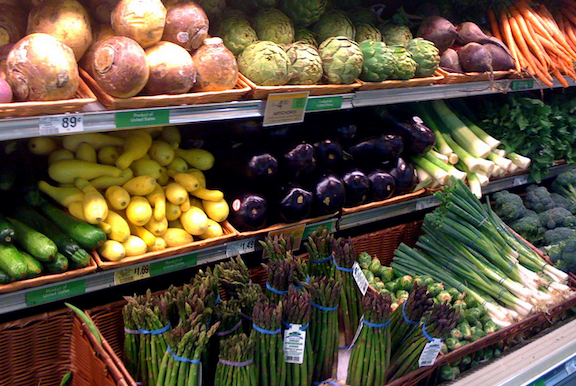Report: Grocers Failing In Commitment To Open New Stores In “Food Deserts”
In 2011, many of the nation’s largest food retailers committed to opening or expanding 1,500 grocery or convenience stores in and around neighborhoods without supermarkets by 2016, with the aim of providing healthier options for consumers. However, a new analysis of the four-year progress for the initiative found that only a fraction of these companies have lived up to their promise.
An analysis of federal food stamp data by the Associated Press found that not only have many of the major grocers that took part in first lady Michelle Obama’s healthy eating initiative failed to open the number of stores pledged, they actually have avoided the areas targeted by the action in the first place.
According to the report, of the 10,300 stores opened by the nation’s top 75 food retailers – including those that didn’t sign on to the healthy food initiative – since 2011, only 250 were in so-called “food deserts.”
The U.S. Department of Agriculture considers a neighborhood a food desert if at least a fifth of the residents live in poverty and a third live more than a mile from a supermarket in urban areas, or more than 10 miles in rural areas, where residents are more likely to have cars, the AP reports.
The Partnership for a Healthier America’s latest update on the initiative in 2014 found that well below half of the group’s goal had been met, and the AP estimates that just 1.4 million of the more than 18 million people who live in food deserts as of 2010 have a new supermarket.
But these food deserts haven’t been completely forgotten. In fact, while supermarkets have avoided these areas, dollar stores have flocked to them.
Dollar General, Family Dollar and Dollar Tree made up two-thirds of the new stores that opened in food deserts. While these locations do offer customers some food products, they typically don’t sell fresh fruits, vegetables or meat – key components for the healthy foods initiative.
“The dollar stores are popping up everywhere in the food deserts, but that doesn’t mean anything if the owners don’t give customers the opportunity for fresh produce,” Norman Wilson Sr., a food desert activist who is pastor of a Pentecostal church in Orlando, tells the AP.
A lack of access to healthy foods contributes to health problems, such as obesity and diabetes, research has shown. The AP reports that proximity to a supermarket can make a big difference in what people eat.
So while stores like Dollar General and 7-Eleven might offer some healthy options, larger chain grocers have more leverage to bring a wider variety of products to consumers at cheaper prices.
Supermarkets say that while they want to offer options to people in food deserts, it’s not always possible.
The AP reported that a Schnucks store in a St. Louis-area food desert closed last year, leaving residents with few options. The company says it had to shutter the store because it was losing money.
Part of the problem with stores losing money on these food desert locations is a lack of knowledge about their customers, Tom Vilsack, Agriculture Secretary says.
“You have to cater to the people who live there. You have to know who they are,” he tells the AP.
And that’s a hurdle larger chains haven’t been able to jump. The CEO of Brown’s Super Stores in the Philadelphia area tells the AP that larger stores often have rigid formats that aren’t easily adaptable to food desert areas.
“They’re not selling what they should be selling because they don’t understand,” Jeff Brown says, noting that stores that do succeed in these areas often have other amenities like pharmacies or banks.
And it’s not just the first lady’s food initiative that seems to be faltering, the AP reports. Lawmakers’ attempts to introduce legislation offering incentives for groceries to build in food deserts have also been unsuccessful.
Grocery chains leave food deserts barren, AP analysis finds [The Associated Press]
Want more consumer news? Visit our parent organization, Consumer Reports, for the latest on scams, recalls, and other consumer issues.


